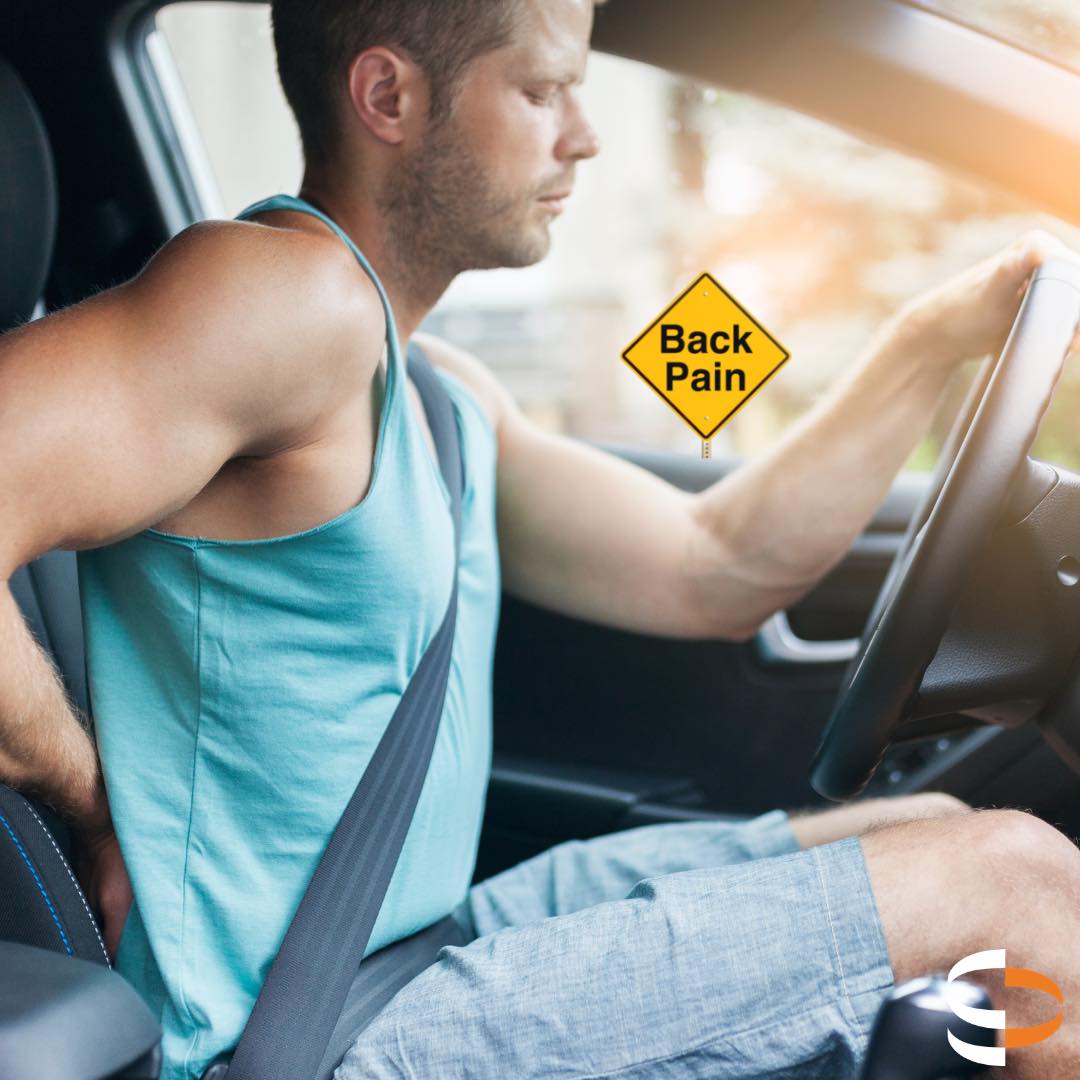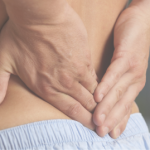This blog is going to explain why you might be experiencing lower back pain while you’re driving, some of the things to be aware of when you’re driving, along with how you should be set up in your driving position, and some Physiotherapy exercise for lower back pain you can do for yourself to help prevent you from getting pain when you’re driving for prolonged periods.
This blog will walk you through the different types of pain that you may be experiencing, along with what all this means for your body and what you should be doing about those types of pain. Along with that, this blog is going to explain why you might be getting pain through certain areas of your back and body when driving, along with some things you can do while you’re on the long drive. We’ll also talk about some of the things you can do outside of the car in order to help prevent yourself from getting the driving pain in the first place.
Back Pain on the Looong Holiday drive!
What a crazy year 2020 has been!!
As international travel restrictions are still in place, and people aren’t getting out overseas for a holiday this Merry Season. We’re guessing most people will be driving to a holiday destination instead.
This blog is going to explore back pain on those long drives. We’ll look at why you get sore, what to do when you get sore, and how to avoid getting sore in the first place!
We’re also going to have a look into how you can set up your car to be in the best position for the long drives, helping you avoid any pain!
Back Pain… Where?
The Neck!
I know most people think of the neck as separate to the back, especially when thinking of back pain. However, the neck is the starting point of the spine and will dictate the position of the rest of the spine – especially when in a sitting position.
The Upper Back Pain!
When we’re talking about the upper back, we’re referring to the area anywhere between the base of the neck and the lumbar spine, or lower back. Your upper back is important for shoulder and blind spot checking while driving and parking.
The Lower Back Pain!
The lower back is the most obvious part of the back to be thinking of when talking about back pain. Given 1 in 6 Australians have experienced back pain in the last 12months, we’re confident people are thinking of back pain when driving for long distances in the car.
Why are you getting pain?
Did you know that your driving position in the car can be one of the biggest lower back pain causes? Simply put, we spend plenty of time sitting in a car travelling or commuting without putting too much thought into HOW we are actually sitting.
When talking about getting pain while being in the car, there are three main factors to be thinking about; muscle pain, joint pain, and nerve pain.
While the sensation of muscle and joint pain is relatively simple. The muscle is under stress, so you feel soreness or aching in the muscle. The joint (facet joint) is under pressure, so you feel soreness or aching in the joint.
Nerve pain is a little more complicated. When a nerve is irritated, you may not feel the pain or aching in the location it is being irritated, but rather feel it along the innervation of that nerve. For example, while sciatic nerve pain is felt down the back of the leg – the cause of the irritation is in the glutes or the lower back.
Muscle Pain
When sitting in the car for a prolonged period, you’re asking your muscles to hold you in a certain position and perform other tasks at the same time. For example, while sitting holding the steering wheel, you will periodically have to change lanes meaning you will have to check your blind spot. This means your muscles are holding you in the correct driving position, and then you’re also asking them to rotate through the spine to check your blind spot. This is making the muscles work at close to their capacity, holding statically and then performing a movement at the same time.
When your muscles don’t have the required amount of strength or endurance to hold you in this position and then rotate to check the blind spot, they get tired and start to tighten up. While on a short 10min drive, you’re probably not really going to notice the difference too much. However, on a longer drive (45min+) you’re going to notice those tight and sore muscles – causing some upper back pain (including the neck), and potentially also some lower back pain.
Joint Pain
As we can understand your joints are supported by your muscles. This means that once your muscles start to fatigue, your movements and posture will start to load through the joints themselves, this is where we’re talking about the facet joints (where the spine bone meets the next one). Loading through the joints themselves can cause discomfort and facet joint pain.
Loading through the facet joints themselves may cause pain and discomfort through the joints.
Once the facet joints start to experience increased load, they will start to become irritated. This irritation causes small amounts of inflammation within the joint space. Once inflammation has started to settle in, you’ll start to feel the aching through the joint. Without rest or movement through the joint, it is very difficult for the body to start resorbing & moving this inflammation, meaning you will continue to feel the soreness through the joints after you have finished the drive.
Nerve Pain
As you may or may not know, your nerves are passive structures; meaning they need protection and support facilitated by the joints and muscles. The muscles provide support and movement for the nerves throughout their distribution, while the joints help to provide protection and support at the same time.
Once the muscles have begun to fatigue and the joints have started to become irritated, this will then begin to irritate the nerve endings. As the nerves become more inundated with inflammation and irritation, they themselves become more and more irritated, furthering the negative inflammation cycle. Generally nerves do not react well to inflammation, causing people to feel sharp, stinging, or shooting pain, sometimes progressing into pins and needles, or numbness.
Given the excessively slow healing time of the nerves, pain in the nerves can last for a couple of hours, even days after the initial injury or irritation.
One of the best examples is sciatic nerve pain. If you have ever sat for too long in one position, especially sitting on the edge of your seat, you might notice that the rest of your leg will start to tingle and maybe your foot will go numb. The tingling and numbness is felt in the back of the leg, but the source of the tingling is from the seating position and back of the leg (closer to your bum).
In terms of time, you will also notice that just because you stopped sitting in that funny position, the pain doesn’t go away immediately. It will hang around for a couple of minutes at least, this is dependent on how long you were compressing the nerve for and therefore how big the nerve “injury” is, giving you a better understanding of the time it will take for a larger nerve injury to recover.
Driving position causing factors
Neck
Pain through the neck while driving can be caused by your head position relative to the rest of your body. Generally, the head will be poked forward, causing increased pressure and stress on the upper cervical muscles and joints.
There are usually only three factors in your driving position that would be causing your chin poke, and neck pain. The first is the steering wheel is blocking your view of the instruments, and you’re having to poke your chin forward to see the dash. The second being you’re too far away from the dash for your level of vision, and you’re poking your head forward to try and get a clearer image of the instrumentation. Or third, your headrest is irritating the back of your head or neck, and you’re subconsciously trying to avoid that irritation.
Thoracic
Getting pain through your upper back can be a little more complicated when related to your driving position. Pain through your thoracic spine could be caused by the steering wheel position – being too low or too high, too far away or too close; the seat back angle not being in the right position; or the seat back position being too far or too close to the steering wheel.
Lumbar
Lower back pain can be caused by the above listed factors flowing down to the lumbar spine, it can also be caused by a couple of specific things around your driving position. The first thing would be the seat bottom hip angle (not the seat back), having too sharp of an angle through the hips, can lead to excessive rounding through the lumbar spine. Secondary to that, the depth of the seat will also play a part in the amount of lumbar flexion or extension, if the back of your knees are pressing into the end of the seat, you will move away – changing your hip angle and then changing your lumbar angle at the same time.
Another driving position factor that will be affecting your lumbar spine is your seat’s distance from the pedals. If your seat is too far away from the pedal, when you press down on the brake or accelerator you will extend through your lower back to reach the distance. If you’re seat is too close to the pedals, when sitting at a rest position you will have your knees higher than your hip – resulting in excessive lumbar flexion.
How you should be set up
Seat Height
Seat height is in reference to the position of the base of the seat in relation to the rest of the vehicle. Ideally when in the correct position the seat will allow;
- Your hips to sit at the same level as the knees, if not higher than the knees
- Have the seat in a position where the road and the instrumentation is still within clear view
- If you have positioned your seat to its highest position, and you’re still unable to see the road or instrumentation or you’re not quite in the correct position – you can try adding a cushion to the base of the seat to boost your height further
Seat Length
Some vehicles now have the ability to adjust the length of the seat. When looking at the length of the seat, there should be a gap of at least 2 fingers between the back of the knees and the edge of the seat. This gap will help to avoid irritation at the back of the knees, resulting in further slouching away from the back of the seat to avoid the irritation – resulting in further lower back pain.
Seat Position
When talking about the seat position, we’re referring to the position of the base of the seat in relation to the pedals on the floor. When the seat is in the correct position, you should be able to completely depress the brake pedal to the floor without your lower back arching away from the seatback.
Along with this when you’re resting at the pedals, your knees should be sitting at around 20-30degress of knee bend (Flexion). This is in order to keep the nerves running down the back of your leg (sciatic nerve) happy, and not pulling or uncomfortable.
Seat Angle
The seat angle is in reference to the angle between the base portion of the seat, and the seat back. In some cars the base of the seats angle can be adjusted along with the angle of the seat back.
The best position for the base of the seat to be in is flat. If this isn’t comfortable having the seat at around 10-20deg. Seats previously were tilted to 20deg to help avoid ‘submarining’, which is where you would slide forward under the seat belt during sudden and aggressive braking.
When looking at the angle of the seat back, we’re aiming for around 100-110deg. Although this seems very specific, you’re simply trying to avoid being bolt-upright in the seat, or being too flat in the seat. Being either too upright, or too flat in the seat can be a causing factor for mid back pain.
Lumbar Support *Optional extra*
Some cars now have the added luxury of in-built lumbar support to the seat. While this is not always the case for everyone, there are plenty of lumbar supportive devices on the market that can be used in the car.
If your car doesn’t have a built in lumbar support system, and you really don’t feel like spending too much money purchasing one, make sure you take a small pillow or towel with you on the long drive. You can use the rolled up towel or small pillow as a lumbar supportive device, simply follow the same setup below.
When using a lumbar support device, in-built or not, the first thing to consider is the position of the lumbar support device; it should be sitting in the natural curve of the spine, and finish at the top of the belt-line. This is to avoid sitting in a position of too much lumbar lordosis, placing increased pressure on the lumbar spine muscles to hold the position and the lumbar spine joints.
Thoracic Support
When talking of thoracic support in the driving position, it is relatively simple. The back of the seat should come to around, if not just above, the top of the shoulders. If the seat back does not finish at the level of the shoulder, but instead finishes halfway down the back – there is a significant decrease in thoracic support, meaning there is an increased risk of upper back pain.
This is mainly something to be considered when purchasing a car, as there is not too much can be done once the car is purchased.
Head Rest
The headrest in a car seat is often overlooked as people are not exactly sure how it is supposed to be used, and how to adjust it properly.
With your head sitting in the correct position – your ear should be in-line with your shoulder, the headrest should be lightly touching the back of your head. Although initially off putting, having the headrest in this position is the best way to help avoid a whiplash injury in the case of a rear-end car accident.
Steering Wheel
Most steering wheels can be adjusted in terms of the overall height of the wheel, while some can also be adjusted in terms of the rake (in and out) of the wheel too. With this in mind, it is important to have the wheel in the correct position for your driving set up.
To get into the correct position, while stationary, you should be able to press your shoulder blades back into the seat back comfortably while simultaneously being able to place your wrists on the top of the wheel in your normal driving position. This amount of distance will allow your elbows to sit comfortably at around 120deg.
The second thing to consider to get your steering wheel position correct, is the height of the wheel. The wheel should be high-enough that your palms are sitting just below your shoulders, while still giving you a clear view of both your dashboard information and the road ahead.
Mirrors
Once you have set your seat position using the above guide, adjust your mirrors so you can see everything around your car.
What to do if you get sore?
Sometimes, even with the perfect driving position, you’re going to get a little sore while driving. So what should you do once you’re feeling a little sore?
While driving
While you’re driving, for safety reasons, there is not much that you can actually do. Any excessive movements and thinking of other certain movements may distract you from your task at hand and from the road.
One of the only things that you can do while driving is to move through your pelvis. Tilting forward, backward and side to side. Although only a small amount of movement, the movement through the pelvis will help get a little movement through the spine at the same time.
During your trip there will be times where you have to stop along the way, fuel, food, bathroom, etc, and this is a great opportunity to get your body moving. Here are a couple of things you can do to get the blood pumping, and keep your body happy for the rest of the trip;
- Rolldowns with a twist
- Lunges and squats
- Standing version of thread the needle
- Thoracic rotation in a deep squat
Once at your destination
Once you have arrived at your destination, you should be able to find a little space on the floor and a little bit of time to take care of your body a little more thoroughly. The good thing about these couple of exercises is that they won’t take hours for you to complete, so you won’t miss out on your holiday. These eight physiotherapy exercises are going to keep your whole body moving well while on holidays, and make sure you’re not starting your trip home already sore.
- Lumbar rolls & rocks – two of the best stretches for lower back pain!
- Hip flexor stretching – everyone always forgets about their hip flexors
- Foam roller stretch / towel stretch – use a towel when you don’t have a foam roller handy
- Thoracic rotations & breathing – the breathing in this exercise makes all the difference
- Thread the needle – great adaptation from yoga
- 4point chin tuck – a great foundational exercise for neck strength
- Levator scapulae stretch – the stretch of the forgotten muscle
How to prevent pain in the first place?
The best way to help prevent pain is to make sure you’re strong and mobile throughout your entire body. This means being strong and mobile through your neck, thoracic spine, and lumbar spine, along with being mobile and strong around your hips.
If you’ve gotten all the way through this guide, and you’re still getting pain while driving – even on a short trip, make sure you head in to see your Physiotherapist, for back pain treatment, and some lower back pain exercises.
The team at Leaders Sports & Spine Physiotherapy are experts in not only helping you adjust your driving position, but also Pilates for lower back pain too. Through the combination of these two things we will be able to help you out with all aches and pains.
Our expert team of Physiotherapists will be able to conduct a thorough assessment on your driving position setup, along with assessing for any specific back pain red flags, in order to get you on your way to pain-free driving as quickly as the speed limit allows!






